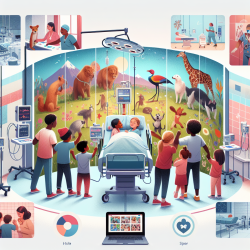Introduction
In middle-income countries (MICs), the establishment of pediatric bone marrow transplant (BMT) services is crucial for addressing severe blood disorders and cancers, which are leading causes of mortality and disability among children. The research paper "Setting up and sustaining blood and marrow transplant services for children in middle-income economies" provides valuable insights into the successful implementation of BMT units in these regions. This blog aims to guide practitioners in enhancing their skills by applying the outcomes of this research or encouraging further exploration.
Key Insights from the Research
The paper highlights several critical aspects for setting up and sustaining BMT services in MICs:
- Collaboration and Engagement: Engaging local professionals and stakeholders is essential. Building relationships based on shared principles and vision is crucial for creating a sustainable patient referral base.
- Cost Management: The research outlines strategies to manage costs effectively, making BMT accessible to more patients. Simplifying BMT units and negotiating network rates for drugs and diagnostics can significantly reduce expenses.
- Training and Support: Training local personnel and establishing a structured cooperation program with experienced BMT professionals is vital. On-site and online training ensures the transfer of knowledge and skills.
- Infection Control: Implementing basic infection control measures, such as hand hygiene and proper nursing care, is crucial. Complex air control systems are not always necessary, especially for low-risk transplants.
Implementing Research Outcomes
Practitioners can enhance their skills by implementing the following recommendations from the research:
- Engage Local Stakeholders: Build professional relationships with local healthcare providers and authorities to ensure the long-term sustainability of BMT services.
- Focus on Cost-Effective Solutions: Simplify BMT unit design and equipment to reduce costs while maintaining high standards of care.
- Prioritize Training: Invest in training local healthcare professionals and establish partnerships with experienced BMT centers for knowledge transfer.
- Enhance Infection Control: Implement basic infection control measures and focus on proper nursing care to minimize complications.
Encouraging Further Research
While the research provides a solid foundation for setting up BMT services in MICs, further research is needed to address the following areas:
- Long-Term Outcomes: Investigate the long-term outcomes of BMT in MICs to identify areas for improvement and ensure sustainable success.
- Alternative Stem Cell Sources: Explore cost-effective alternatives to matched family donors, such as haploidentical transplantation, to increase accessibility.
- Integration with Supportive Care Programs: Research the integration of BMT services with supportive care programs to enhance patient outcomes.
Conclusion
By implementing the outcomes of the research and encouraging further exploration, practitioners can significantly improve pediatric BMT services in MICs. This will ultimately lead to better health outcomes for children suffering from severe blood disorders and cancers.
To read the original research paper, please follow this link: Setting up and sustaining blood and marrow transplant services for children in middle-income economies: an experience-driven position paper on behalf of the EBMT PDWP.










